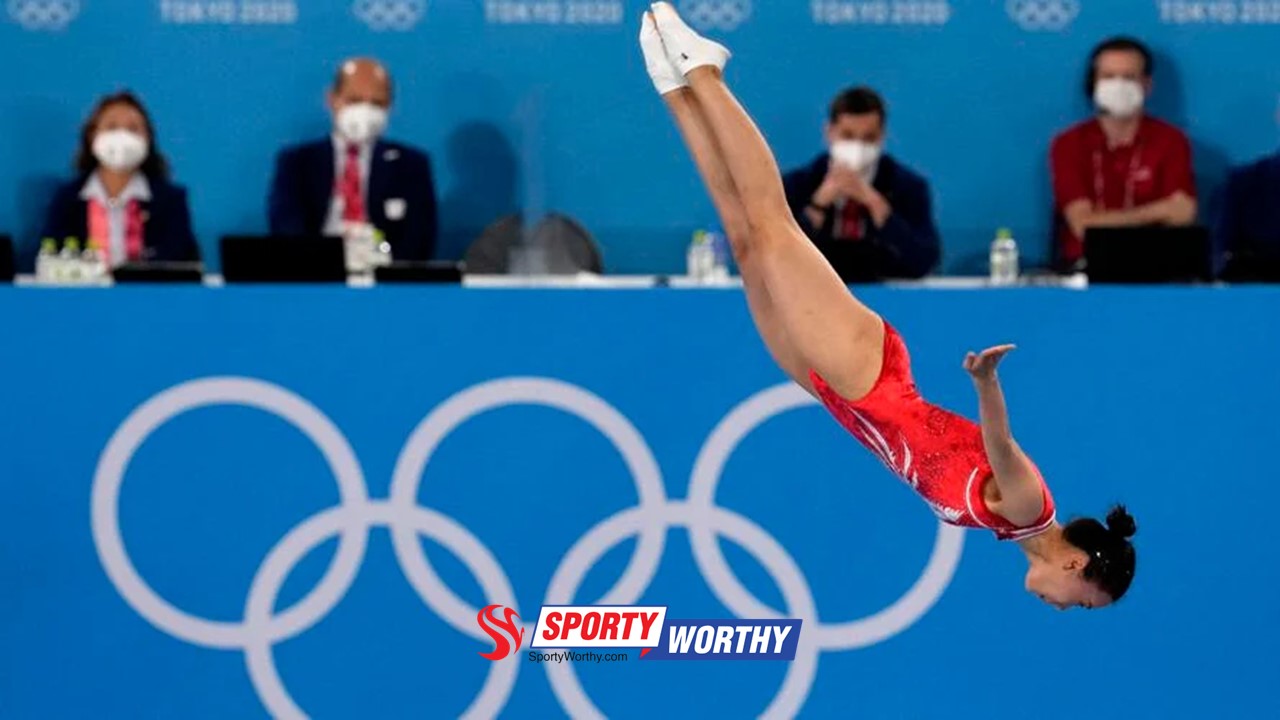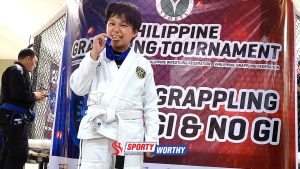Table of Contents
ToggleThe sport of Olympic trampoline combines the grace of gymnastics with the thrill of acrobatics, captivating audiences at the Olympic Games. Behind the breathtaking performances lie secrets of training that are truly jaw-dropping. This blog post will uncover four remarkable secrets of Olympic trampoline training that contribute to the awe-inspiring displays at the world’s most prestigious sporting event.
What is Olympic Trampoline?
The Olympic trampoline is a thrilling and acrobatic sport showcasing its competitors’ extraordinary athleticism and precision. In this sport, athletes perform a series of complex and gravity-defying maneuvers while bouncing on a large, taut trampoline bed. The athletes execute a variety of flips, twists, and somersaults, reaching astonishing heights and demonstrating exceptional body control and coordination. The sport requires a unique combination of strength, flexibility, and spatial awareness, making it a visually captivating and high-energy event for spectators.
To win in the Olympic trampoline, athletes must impress the judges with their technical skills, execution, and difficulty performing routines. Judges evaluate the athletes based on the height and form of their jumps, the complexity and precision of their maneuvers, and their ability to maintain control throughout the routine. The highest scores are awarded to athletes who display mastery of difficult skills with flawless execution while also showcasing creativity and originality in their routines. Ultimately, the athlete with the highest overall score from the judges is declared the winner, earning recognition for their exceptional performance in the electrifying sport of the Olympic trampoline.

1. The Science of Bouncing
Mastering the science of bouncing is crucial for athletes training in the Olympic trampoline. This specialized discipline demands a precise understanding of body mechanics and physics to achieve the perfect bounce. Athletes undergo rigorous training to perfect their timing, coordination, and control, allowing them to execute complex routines with finesse and precision. Harnessing the principles of physics and body mechanics is essential for achieving the ideal bounce, enabling athletes to soar to incredible heights and perform gravity-defying maneuvers with grace and agility.
In Olympic trampoline training, athletes strive to master the art of bouncing, honing their skills to execute flawless routines. Through dedicated practice and relentless determination, athletes work tirelessly to perfect their technique and achieve the ideal bounce. The fusion of precision timing, exceptional coordination, and unwavering control is paramount in pursuing excellence in the Olympic trampoline, as athletes endeavor to push the boundaries of what is physically possible and showcase their unparalleled athleticism on the world stage.
2. Air Awareness and Spatial Orientation
Olympic trampoline training strongly emphasizes cultivating exceptional air awareness and spatial orientation skills. Athletes in this specialized training program undergo rigorous drills and exercises designed to elevate their ability to execute intricate maneuvers precisely while airborne. The intense focus on honing these fundamental skills enables athletes to navigate the challenging dynamics of the trampoline with confidence and finesse, ultimately enhancing their performance and competitive edge in the sport of the Olympic trampoline.
Committing to developing heightened air awareness and spatial orientation is a cornerstone of Olympic trampoline training. Athletes engage in targeted training regimens that push the boundaries of their spatial perception and control, enabling them to execute complex aerial maneuvers with unparalleled precision and grace. Through dedicated practice and strategic skill development, athletes can harness their heightened air awareness and spatial orientation to soar to new heights of performance and excel in the demanding realm of Olympic trampoline competitions.
3. Strength and Flexibility
The training regimen for Olympic trampoline athletes is a rigorous and comprehensive program focusing on developing strength and flexibility. To execute the gravity-defying flips, twists, and rotations required in Olympic trampoline routines, athletes engage in intensive strength training exercises. These workouts are designed to build the core strength necessary to propel the athletes high into the air and maintain control throughout their routines. In addition to strength training, athletes also dedicate significant time to flexibility training, which allows them to achieve the extreme body positions required for their aerial maneuvers. The combination of strength and flexibility training is essential for Olympic trampoline athletes to perform at the highest level and execute their routines with precision and control.
The targeted workouts in the training regimen for Olympic trampoline athletes aim to build the core strength and flexibility needed to meet the demands of their sport. These athletes undergo intensive strength training to enhance their ability to generate the power and height required for their acrobatic maneuvers. Furthermore, flexibility training enables athletes to contort their bodies into the complex positions necessary for executing their routines with grace and control. By focusing on strength and flexibility, Olympic trampoline athletes can develop the physical capabilities needed to perform at the elite level and showcase their incredible skills on the world stage.
4. Mental Resilience and Focus
Olympic trampoline training demands unparalleled mental resilience and unwavering focus from athletes. These integral aspects are crucial for navigating the intense pressure and maintaining concentration during the high-flying routines that define the sport. Athletes participating in Olympic trampoline events undergo rigorous psychological training to cultivate the mental fortitude necessary to perform at the highest level. This training equips them with the psychological tools to overcome challenges, stay focused, and deliver exceptional performances under immense pressure.
The mental resilience required for Olympic trampoline training goes beyond physical prowess, as athletes must harness their inner strength to push through the demands of the sport. With the ability to stay composed and focused, competitors can execute their routines precisely and confidently, showcasing their trampoline mastery. Through dedicated psychological training, athletes can develop the mental fortitude needed to thrive in the competitive world of Olympic trampoline, demonstrating the profound impact of mental resilience and focus on their performance.
Bottom Line: Secrets of Olympic Trampoline
The secrets of Olympic trampoline training encompass a fascinating blend of science, athleticism, and mental fortitude. As we witness the astonishing performances at the Olympic Games, we must appreciate the dedication and mastery behind each gravity-defying leap and twist. These jaw-dropping secrets showcase the sport’s athleticism and inspire admiration for the remarkable journey of Olympic trampoline athletes.










